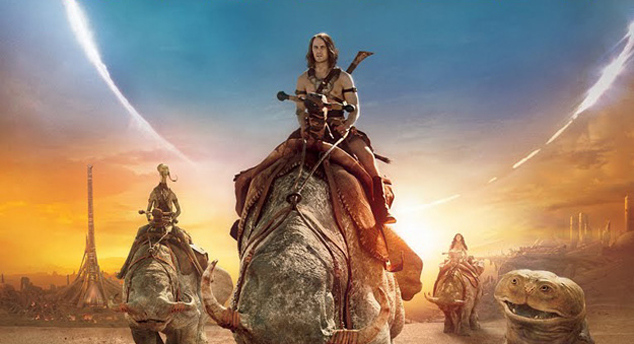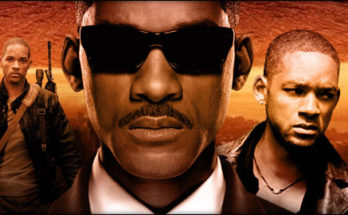Edgar Rice Burroughs’ novel A Princess of Mars (and its numerous sequels) has been an inspiration for several decades to everyone from other notable science fiction authors (Ray Bradbury, Arthur C. Clarke, Michael Crichton) to renowned filmmakers (James Cameron, George Lucas). It’s ironic then that Disney’s 2012 movie adaptation, John Carter, feels heavily recycled in both its storytelling techniques and its visual effects. Mars and its inhabitants appear as outcasts from hundreds of other films thrown together to fight a war fought countless times before. Yet for its faults in narrative and lack of fresh visuals, John Carter does accomplish a real sense of adventure and an accompanying journey of epic proportion. There may not be a valid reason propelling the monumental conflict between races, worlds, and gods, but the grand spectacle of action might almost convince you otherwise.
While escaping from a band of Apaches in the Arizona desert, former cavalryman John Carter (Taylor Kitsch) is mysteriously transported to Mars. Once there, he discovers the difference in gravity allows him vastly increased strength and agility. Taken in by the Tharks, a nomadic tribe of violent, four-armed green aliens who wish to exploit Carter’s superhuman abilities, the soldier begins to learn of the conflicts engulfing the planet while simultaneously befriending mighty warrior Tars Tarkas (Willem Dafoe). When the princess of a humanoid race of red Martians, Dejah Thoris (Lynn Collins), is captured by the Tharks, John Carter becomes entwined in the war between the city of Helium, the invading warlord of Zodanga, and an even more ominous foe intent on seeing Mars in ruins.
Although the source novel (originally called Under the Moons of Mars) was written in the early 1900s, its first theatrical adaptation arrives over 100 years later. Author Burroughs (of Tarzan fame) is attributed with influencing many great 20th century science-fiction writers, artists and filmmakers with this grand, pulpy, planetary romance. Because of its date of creation, its fair to assume that many of the unifying motifs and designs explored arose independently of anything else. Yet nearly every element is presented visually as thoroughly derivative – from masterpieces such as Star Wars or The Time Machine, or reworked from contemporary flicks as recent as Thor, Cowboys & Aliens, Clash of the Titans and Captain America. Even if Burroughs’ concepts were the basis for subsequent science-fiction productions, Disney’s John Carter makes it look like assorted, cloned and stitched-together fantasy surfeit. It’s all too late and old news – too bad for the great Burroughs to be represented so poorly here.
The dialogue is generic, every action movie stunt cliché imaginable is thrown in, and the themes of taking a stand, choosing sides, and coming to terms with the past have never felt so plain. At least there’s an abundance of makeup, costumes and computer graphics. But the character designs aren’t particularly inspired, the mythology is clumsily defined, jargon overruns typical ancient lore, and rituals muck up the seriousness of warfare and arranged marriage. Despite its numerous shortcomings, John Carter’s biggest offense is the realization of the villains (a rushed mishmash of the book sequel The Gods of Mars), which are given almost no definition, ground rules, boundaries, relationship to other characters, or real purpose. A 1000-year-old conflict between historic enemies fueled by political turmoil and a quest to protect a conveniently humanoid princess is clearly not enough strife for our hero – apparently he needs shape-shifting, teleporting, immortal, sorcerer-like monks, hellbent on playing games over oblivious warring factions, to spice up existence on the dying desert landscape of Mars.



